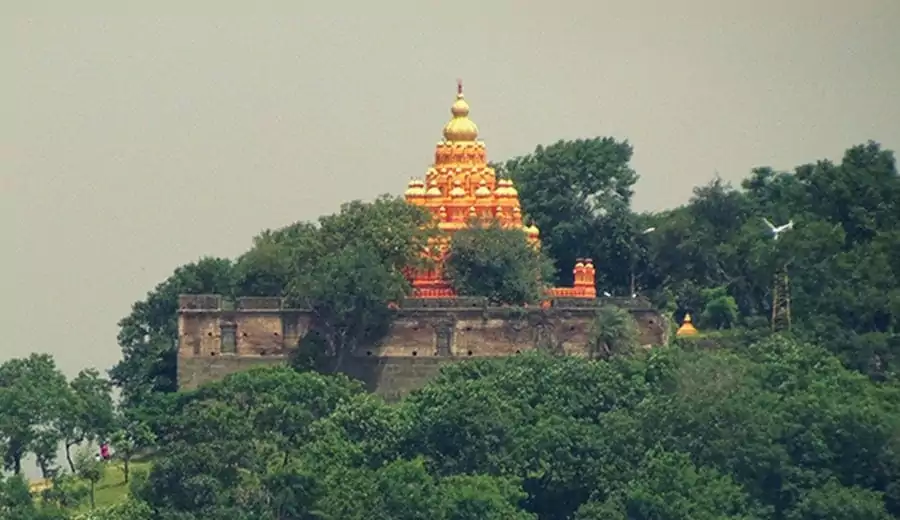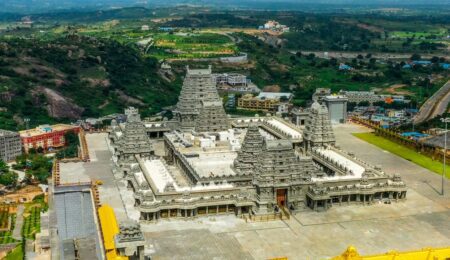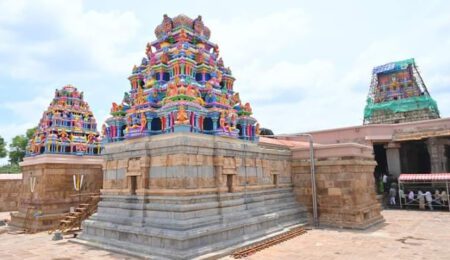Parvati Temple in Pune: A Spiritual Beacon Overlooking the City
Nestled on top of a hill that offers a breathtaking panoramic view of Pune, the Parvati Temple in Pune is not just a spiritual destination, but also a historical and architectural marvel. Standing at a height of 2,100 feet above sea level, this 17th-century temple complex is one of the oldest heritage structures in the city. A true blend of devotion, culture, history, and scenic beauty, the temple continues to attract pilgrims, tourists, historians, and photographers alike.
Whether you’re a devotee seeking divine blessings, a history enthusiast eager to walk through Maratha heritage, or a traveler in search of peaceful viewpoints, the Parvati Temple in Pune offers something for everyone.
Historical Significance of Parvati Temple in Pune
The Parvati Temple in Pune was built during the reign of the Peshwa dynasty in the 18th century. The temple’s construction was initiated by Peshwa Balaji Baji Rao, also known as Nana Saheb. It is said that he built the temple as a gesture of gratitude after his mother was cured of a severe illness by consuming the sacred water from the Parvati hill’s natural springs.
The temple is dedicated primarily to Goddess Parvati, the divine consort of Lord Shiva. However, the temple complex comprises five major shrines:
- Devdeveshwar Temple – dedicated to Lord Shiva and Goddess Parvati.
- Vishnu Temple
- Vitthal Temple
- Rama Temple
- Kartikeya Temple
The intricate architecture of the temple reflects the Maratha style of construction, with black stone and traditional Peshwa elements. The presence of historical relics, paintings, and manuscripts from the Peshwa era makes this temple an important heritage site in Pune.
Architectural Splendor of the Parvati Temple in Pune
The architectural charm of the Parvati Temple in Pune lies in its simplicity yet cultural richness. Built using black basalt stone, the temple exudes a traditional Maratha architectural style.
Key architectural highlights include:
- Stone Steps: There are 103 stone steps leading up to the temple from the base of the hill. These steps are flanked by lush greenery and occasional benches for rest.
- Temple Dome and Spire: The Shikhar (temple spire) rises high with intricate carvings that reflect fine craftsmanship of the Peshwa era.
- Mandapa (pillared hall): The temple features a beautifully carved Mandapa that adds to its divine atmosphere.
- Peshwa Museum: The nearby Peshwa Museum houses portraits, manuscripts, coins, and weapons from the Maratha Empire.
The view from the top is stunning, especially at sunrise or sunset. On clear days, major landmarks of Pune like Sarasbaug, Sinhagad Fort, and the cityscape can be spotted from here.
Mythological Importance of Parvati Temple in Pune
According to Hindu mythology, Goddess Parvati, the daughter of the mountain king Himavan, performed severe penance to win the love and companionship of Lord Shiva. This penance is believed to have taken place in many sacred locations, one of which is believed to be the Parvati Hill in Pune.
Because of this divine connection, the Parvati Temple in Pune is considered highly sacred by devotees of Lord Shiva and Goddess Parvati. The temple is a hub of activity during major Hindu festivals like Maha Shivratri, Navratri, and Shravan Maas.
Festivals and Rituals at Parvati Temple
1. Maha Shivratri
Maha Shivratri is the most celebrated festival at the Parvati Temple. Devotees from across Maharashtra gather here to offer milk, water, and bael leaves to the Shivling. The temple premises light up with diyas, bhajans, and chants of “Om Namah Shivaya.”
2. Ganesh Chaturthi
Though not the primary deity, Lord Ganesha is honored with equal enthusiasm during Ganeshotsav. Special poojas and processions are held during the festival.
3. Navratri
Navratri sees the temple adorned with lights, flowers, and festive décor. Devotees worship Goddess Parvati in her nine forms during the nine days.
4. Shravan Month
This holy month dedicated to Lord Shiva witnesses increased footfall. Mondays during Shravan are particularly auspicious, and long queues of devotees line up to get darshan.
How to Reach Parvati Temple in Pune
The Parvati Temple in Pune is centrally located and well-connected via road and public transport.
- By Air: Pune International Airport is just 13 km away.
- By Train: Pune Railway Station is about 6 km away.
- By Road: Local buses, autorickshaws, and cab services like Ola and Uber operate frequently to and from the temple.
If you’re driving, there is parking available at the base of the hill.
Best Time to Visit Parvati Temple
While the temple is open all year round, the best time to visit is between October to March. The weather is pleasant, making the climb up the steps comfortable. Early mornings and evenings are ideal for enjoying the scenic views of Pune city from the hilltop.
Parvati Hill: A Photographer’s Paradise
For photographers and content creators, Parvati Temple in Pune offers unmatched vistas. The hill’s height provides a 360-degree view of the city. On clear days, even the Sinhagad Fort, Pune University, and Shaniwar Wada are visible.
The golden hour views from the temple are especially magical, making it a popular spot for landscape and cityscape photography. Drone photography, where permitted, captures stunning aerial views of the temple and surrounding urban spread.
Nearby Attractions Around Parvati Temple in Pune
1. Saras Baug Ganpati Temple
Located just 2 km away, this temple houses the famous Siddhivinayak Ganpati idol and is surrounded by a lush garden and lake.
2. Shaniwar Wada
Just 4 km from Parvati Hill, this 18th-century fortification was the seat of the Peshwas and is an important historical monument.
3. Pune Okayama Friendship Garden
Also known as Pu La Deshpande Garden, this is a serene Japanese-style garden and a favorite among nature lovers.
4. Katraj Snake Park
For those traveling with kids, this park offers a fascinating view of various reptiles and is just 6 km away.
Parvati Museum – A Glimpse into Maratha Legacy
Adjacent to the temple is a small Peshwa Museum that showcases:
- Weapons used during the Maratha rule
- Personal belongings of Peshwa rulers
- Old photographs, manuscripts, and coins
- Paintings of Parvati Hill during the British era
Entry is either free or very nominal, and it gives visitors a peek into the glorious history of Pune and the importance of the temple during the Maratha Empire.
Spiritual Benefits of Visiting Parvati Temple in Pune
Devotees believe that visiting the Parvati Temple in Pune brings:
- Mental peace and emotional clarity
- Divine blessings of health and prosperity
- Marital harmony and familial bliss
- Strength and determination during times of hardship
The peaceful ambiance of the hill, combined with the sacred vibrations of the temple, provides an ideal setting for meditation, yoga, or chanting.
Parvati Temple Timings and Entry Fee
- Temple Timings: 5:00 AM to 10:00 PM (Daily)
- Entry Fee: Free (Some nearby attractions may have nominal charges)
- Photography: Allowed in most areas. Drone usage may require prior permission.
Tips for Visitors to Parvati Temple in Pune
- Wear comfortable footwear as there are over 100 steps to climb.
- Carry water, especially during summer.
- Avoid visiting during peak noon hours as it can get hot.
- Be respectful of religious practices and maintain silence inside the sanctum.
- Try visiting early morning for crowd-free darshan and beautiful sunrise views.
Conclusion: Why You Must Visit Parvati Temple in Pune
The Parvati Temple in Pune is not just a temple; it’s an experience that connects you with spirituality, history, nature, and heritage all at once. Whether you’re a resident of Pune or a traveler discovering the city, this temple is a must-visit destination.
From the moment you begin the climb to the serene aura at the top, everything about the Parvati Temple evokes peace and reverence. With its panoramic views, rich heritage, and divine presence, it truly stands as one of the crown jewels of Pune’s spiritual and cultural landscape.




Leave a Comment